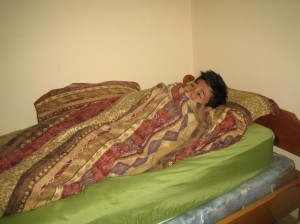It is a known fact that skin ulcers are open sores that are painful and usually recur or do not heal well. Skin ulcers have various causes but are typically triggered by poor circulation. Take note that skin ulcers are often accompanied by the sloughing off of swollen tissues. A skin ulcer is mostly characterized by its appearance, location and the look of the surrounding skin. There are different types of skin ulcers that you have to be familiar with.
Venous ulcers
A venous ulcer characterized as a superficial wound triggered by poor circulation from the legs up to the heart. The diminished circulation causes the fluid to recede in the vein and leak out into the adjacent tissues. As a result, the tissues break down and cause the development of the painful ulcers.
Take note that the base of the venous ulcer is usually red in color and covered with a yellowish film. These sores can weep clear liquid but can also ooze yellow or green colored discharge if the ulcer is infected. Additionally, venous ulcers are also known as stasis leg ulcers that commonly manifest on the sides of the lower leg.
Arterial ulcers
Arterial ulcers or lower extremity ulcers usually occur among individuals who are suffering from artery diseases. With this skin ulcer, it is usually found on the toes, feet and toenails where the defective arteries have difficulty circulating the blood correctly. The center of the arterial ulcer has yellow, brown, gray or black color while the surrounding skin often appears red and swollen. Take note that arterial skin ulcers are usually painful and the pain tends to worsen at night time.
Neuropathic ulcers
Neuropathic ulcers are mainly present in diabetic individuals who suffered from nerve damage in the feet. Take note that these skin ulcers usually develop at the pressure points on the base of the foot and mostly caused by sustaining high pressure. The base of a neuropathic ulcer tends to vary depending on the circulation of the individual, but it usually appears pinkish-red or brownish-black in color. The surrounding skin is frequently calloused. Individuals who are diabetic can minimize the risk of developing neuropathic ulcers by using shoes that properly fit and monitoring their feet for any sores regularly.
Pressure ulcers

Pressure ulcers are commonly known as bed sores. These are wounded areas of the skin due to staying in a position for an extended period. The lack of movement disrupts the circulation and the lack of blood flow eventually kills the tissues in that area. Take note that these skin ulcers are usually found in areas of the body in which the bones are nearby the skin such as the heels, ankles, hips, back and elbows. Those who are bound to wheelchairs often develop bed sores on their buttocks. It is important to provide appropriate first aid once pressure sores are noted since they can cause serious infections in the long run.
Treatment for skin ulcers
All types of skin ulcers can greatly benefit from topical wound care, antibiotics and compression bandages or garments if infection has set in. The most effective mode of treatment for venous skin ulcers is regular elevation of the legs higher than the heart. In case the venous ulcers become infected, it would require skin grafting or vein surgery. As for severe cases of arterial ulcers, the solution is to undergo bypass surgery or endovascular therapy to restore the circulation to the feet and legs.
